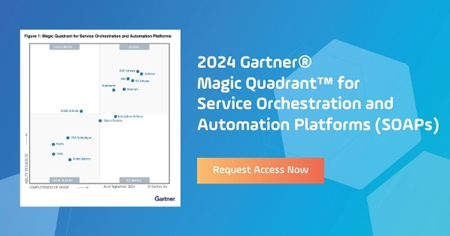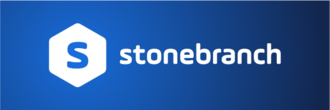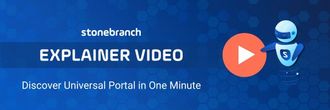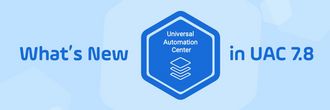DataStage Job Scheduler: Orchestration Improves Error Handling
Centralize control, improve error handling, and more — level-up your DataStage job scheduler by connecting it to a DataOps orchestrator like the Stonebranch Universal Automation Center (UAC).

DataStage is an enterprise data ETL tool that extracts source data, cleans and transforms it, and loads it into database storage. While it's a powerful product, it does have limitations around scheduling jobs, error handling, and troubleshooting automated tasks.
Enterprises often use a third-party DataStage job scheduler to automate and orchestrate their full data pipelines. This article will explore these challenges and how to overcome them with Stonebranch Universal Automation Center (UAC).
Job Scheduling in DataStage
IBM InfoSphere DataStage is used to design, develop, and implement ETL (extract, transform, load) processes. However, when it comes to managing and executing the automation of those processes, users often choose one of four approaches:
- DataStage's job scheduler capabilities (inbuilt) can integrate data by defining workloads to run at specific times, intervals, or when defined triggers occur. It can also be set up to handle dependencies between tasks to ensure they're executed in the correct order. Though it's a powerful ETL tool, DataStage offers limited error handling, troubleshooting, and recovery capabilities.
- Open-source schedulers, including free tools that can automate tasks across a variety of platforms. They're a cost-effective, flexible option for businesses on a budget. However, organizations that prioritize security, scalability, and support may want to look into other options.
- Cloud or on-prem schedulers provide automation within their native environment, whether that's in the cloud or on-prem. These products often have difficulty connecting to each other in a hybrid IT ecosystem — cloud schedulers can't automate on-prem, and on-prem schedulers can't connect to the cloud. This is a problem if you're one of the many organizations with cloud-based data tools and on-premises data sources.
- DataOps orchestrators offer more advanced functionality to manage and automate the flow of data throughout a data pipeline. Gartner defines this category as DataOps orchestrators — platforms that allow users to centrally control all defined processes without replacing specialized data management tools. These versatile solutions integrate with various platforms and applications in hybrid IT environments to offer real-time, event-based automation with advanced error handling and recovery functionality.
Stonebranch Universal Automation Center (UAC) is recognized by Gartner as a DataOps orchestrator. As a DataOps orchestrator, UAC doesn't replace existing specialized data management tools such as DataStage. Rather, it empowers users to manage all automated processes throughout their data pipeline from a single platform.
UAC integrates directly with DataStage. Learn more about the integration here.
How Does a DataOps Orchestrator Help with ETL Process Automation?
ETL tools, like IBM DataStage, are used by just about every enterprise across the globe. However, typically, their automation and scheduling capabilities are limited. ETL job schedulers are most often time-based in nature and are managed separately from the rest of the data pipeline. Data teams require centralized management, observability across the full data pipeline, and proactive notifications to succeed.
That's where an advanced DataOps orchestrator like Stonebranch UAC can help.
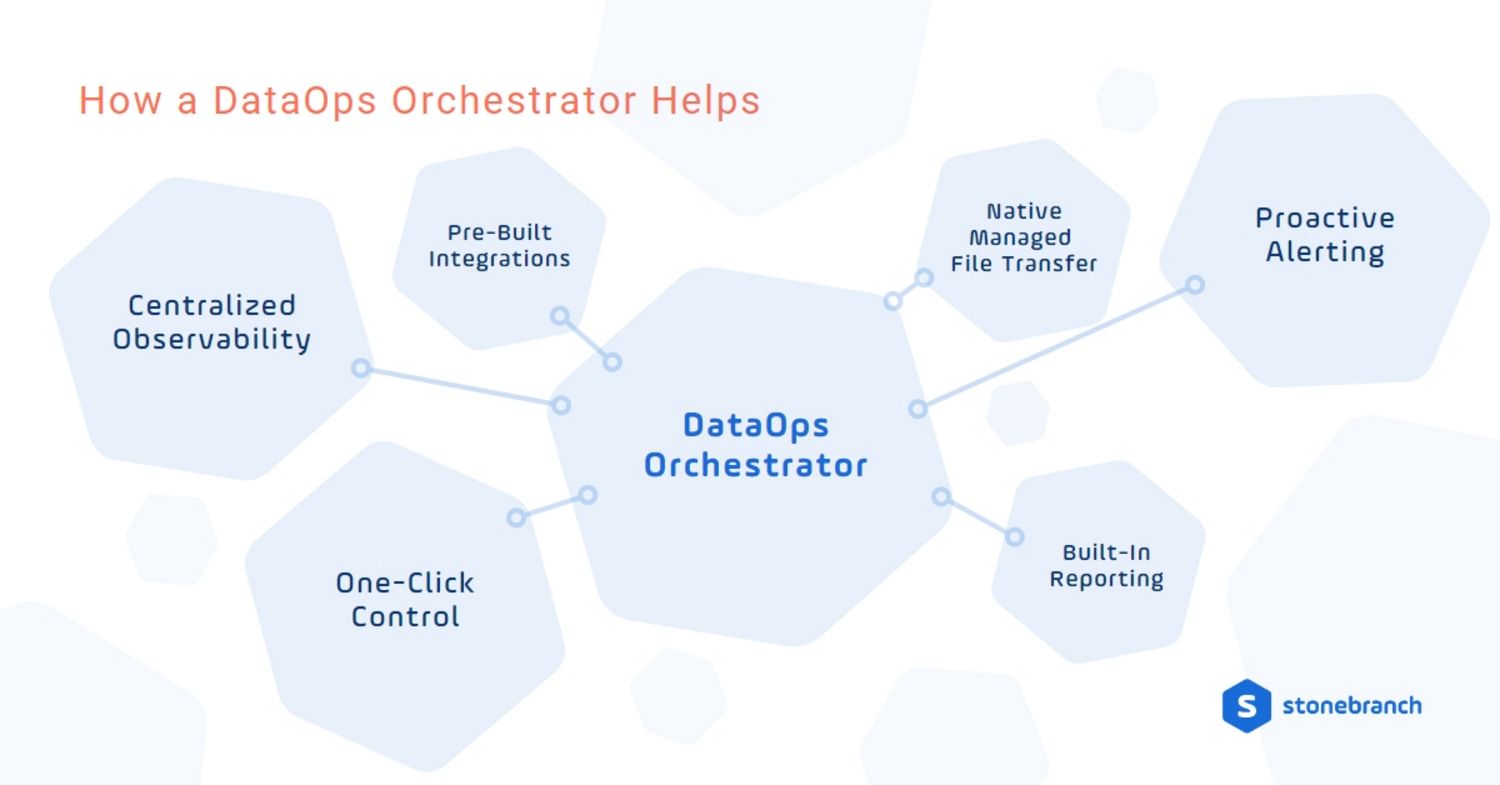
- Centralized observability for all data pipeline activities, including job monitoring, logs, metrics, and traces. This telemetry data is then made available via various reports and dashboards. Observability can help to improve efficiency and reduce the risk of errors. For example, UAC can automatically execute your workloads and send alerts if a task fails or encounters an error.
- Built-in reporting improves visibility and makes it easier to track performance. For example, UAC can generate reports on job status, errors, and performance metrics.
- Proactive alerting can indicate an issue before it impacts anything in the data delivery stage. If a UAC-controlled workflow fails, the failure immediately appears on the UAC dashboard. You can easily navigate directly to the failed task to determine the appropriate next step.
- One-click control to easily re-run and skip-run tasks. Once the root cause is determined, UAC makes it easy to remediate the issue. There's no need to re-run the entire sequence, which would be an unnecessary waste of time and resources.
- Pre-built integrations with a wide array of systems, including data management, DevOps, IT infrastructure, and enterprise applications. UAC is vendor-agnostic and capable of connecting to any past, present, or future technology your organization may use. Explore data pipeline integrations here.
- Native managed file transfer (MFT) functionality — including encryption, compression, and fault-tolerant capabilities — to ensure secure and reliable data movement. UAC includes native MFT solutions for internal and external systems.
By using Stonebranch UAC for data pipeline orchestration, you can improve the efficiency, effectiveness, and scalability of your ETL initiatives.
Level-Up Your DataStage Automation
A multitude of Stonebranch customers use UAC to orchestrate DataStage scheduler tasks and workflows. Vermont Information Processing and Seattle Children's Hospital recently sat down with us to share their experiences — see what they have to say below, or watch the full webinar to learn more!
Start Your Automation Initiative Now
Schedule a Live Demo with a Stonebranch Solution Expert


